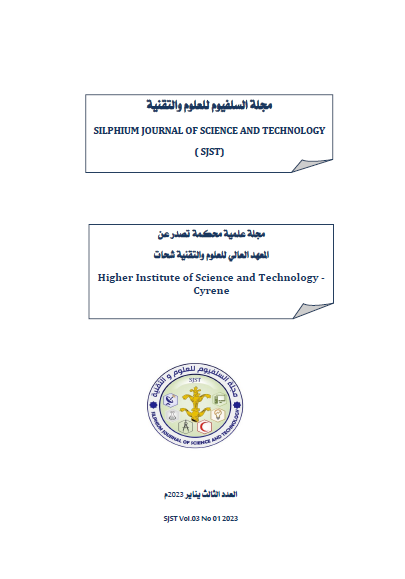Desertification Rate Evaluation Using NDVI and BSI Indicators in Southeast Tobruk, Libya
Keywords:
Desertification Assessment, Southeast Tobruk, NDVI, BSIAbstract
This study has been conducted southeast of Tobruk city to assess the rate of desertification by using Remote Sensing (RS) and Geographic Information System (GIS) through comparing the Normalized Deferent Vegetation Index (NDVI) and the Bare Soil Index (BSI) to determine which of the two indicators is more suitable to achieve the research objective. Satellite images were used from 1986 to 2020 based on (Land sat 5, 8) two images for every five years at spring and summer. The time and degree of desertification were detected using the aforementioned indicators. Final maps were produced for using both of the indicators for (2020). The data of the maps produced using the field assessment of desertification were validated by preparing a Cross-Tabulation table. Comparing the produced maps of (NDVI) and (BSI) with the real ground points (field assessment) through selecting (273) points randomly based on the results of statistical analysis: (user accuracy assessment and Kappa analysis). The user accuracy assessment results for NDVI and BSI maps were (72%) and (75%) respectively, whereas Kappa coefficient results were (0.70) and (0.73) respectively. These specific indicators were used because of their ease of implementation, speed of application, low cost, and their results are suitable for assessing desertification. The relative decrease in the overall results accuracy may be attributed to the soil brightness intensity, which had a greater effect on the NDVI index in the study area.


